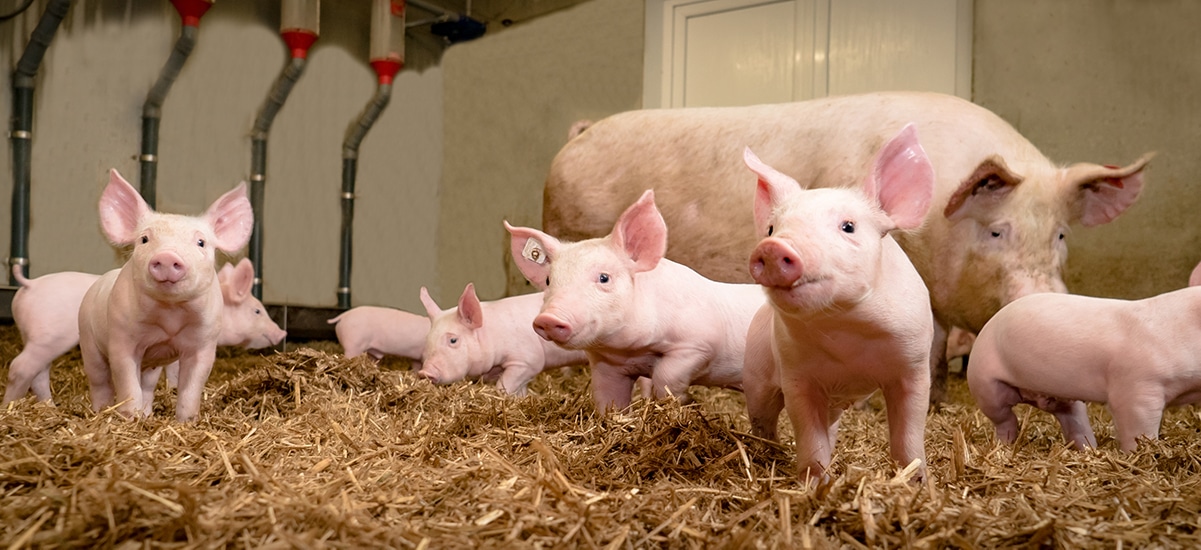
Has the African Swine Fever affected Australia's supply of pork?
The African Swine Flu continues to rage across the globe, with an estimated 200 million pigs dead as a result worldwide. While this incredibly virulent virus has not yet reached Australian shores, it is already affecting our pork industry significantly.
Australian families can expect to have to pay up to 60% more for their Christmas ham than they have previous years. This is because some of the most major producers – and consumers – of pork worldwide, including China, Vietnam and large portions of Europe have been badly affected. These countries have had to begin importing far larger quantities of the meat from overseas, particularly from America and Australia, who remain unaffected.
The hike in demand has provided a lifeline to Australian pork producers who have struggled with oversupply and low prices in recent years.
However, while this may mean greater opportunities for Australian pig farmers, it means the local supplies of pork are running low, as the Australian industry simply cannot keep up with the overseas demand. Prices, therefore, are projected to remain high for the next few years, as Europe and Asia weather the storm of the ASF virus.
Authorities predict the swine fever will eradicate at least a 25-45% of the global pig stocks and obliterate Asian piggeries, increasing demand for Australian pork for the next few years.
Meanwhile the droughts in Australia have pushed costs up for local pig farmers, too. It is estimated that around 10% of Australian pig farmers have gone out of business, hurting the pork shortage further.
And, it doesn’t look like this problem will be going away any time soon. As yet, while there have been numerous attempts, no definite cure for the ASF virus has been found. The disease is incredibly resilient and easily transmissible, able to stay alive in proteins for a very long time. Almost 100% of hosts it infects are killed.
And this isn’t only affecting the supply of pork either. Australian suppliers of other proteins such as beef or sheep meat are also exporting far greater volumes to Asia, as a stop-gap for pork. This has resulted in a global increase in the price of proteins by 4.6% between October and November this year, one of the largest price rises in the industry in decades.
While this is a positive prospect for many of our farmers struggling with drought and oversupply, it means the Australian consumer can expect to see a consistent shortage and high prices for the next few years.
However how drastically would this prospect change if ASF came to Australia? At present, some see this as only a matter of time. With its longevity, this disease could be brought in through the gifts or luggage of a traveler from Asia, or even from dirt off shoes.
The Australian pork industry released its report into the economic impact of African swine fever if it ever crossed our borders and infected our pigs. It makes harrowing reading. A major outbreak at several locations could cost up to $2.03bn, according to the report Economic Analysis of African Swine Fever Incursion into Australia.
Exports of Australian pork would shut down and domestic sales of pork would drop by 25 per cent in the first six weeks. Destroying all infected pigs would be the only way to eradicate the disease. Even in a scenario limiting the infection to one state, such as Victoria, it would result in 23,000 pigs destroyed, and one to three years before the industry was restored to normal.
The African Swine is one of the most major dilemmas to hit the global meat industry in decades. However, while Australia will still be experiencing major shortages probably for several years to come, we have a comparatively optimistic outcome ahead of us. Australian pork and other protein suppliers face a glut of demand, which is a life-saver for an industry that was struggling badly, and we still remain infection-free. However, Australian consumers will have to accept the major price increases that come with this
Equipping the food industry to grow with food processing and packaging solutions
call 1300 88 99 51
email [email protected]
room 35 Shirley Way, Epping VIC 3076
room 9 Mcilwraith St, Wetherill Park NSW 2164
room 21 Hoyle Rd, Hope Valley WA 6165
room 27 Beal Street, Meadowbrook QLD 4131
room 7 Chadderton Bvd, Epping VIC 3076
room 22 Glassford Rd, Kewdale WA 6105
room 25 Hayton Road, Wigram, Christchurch 8042, NZ
Connect with us on LinkedIn
